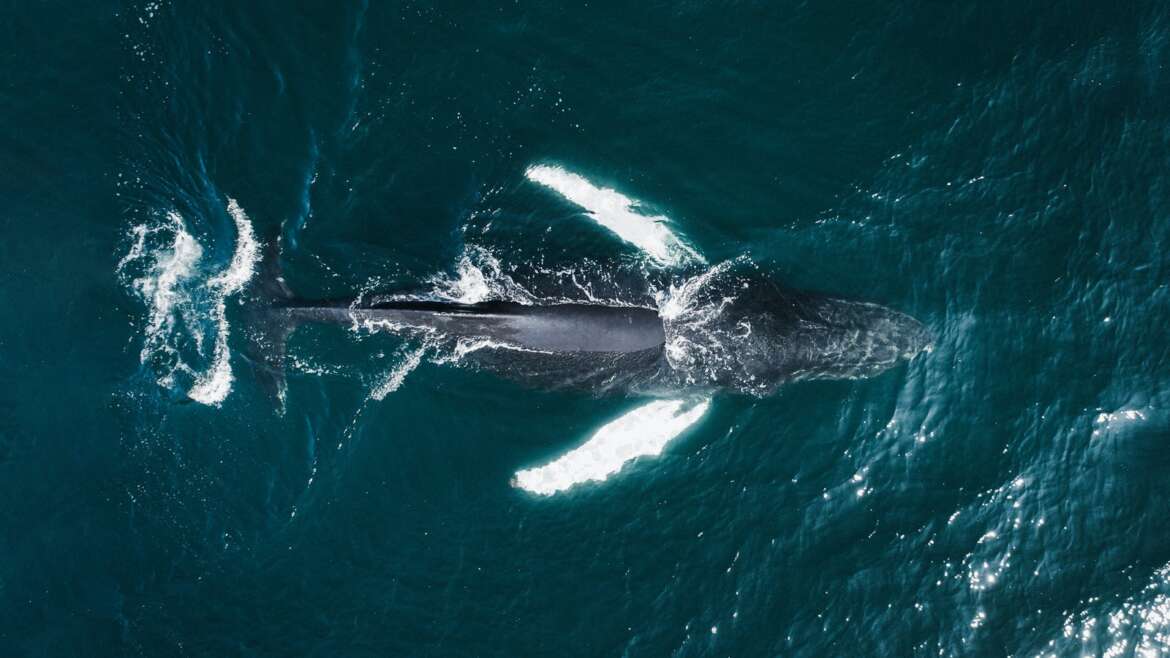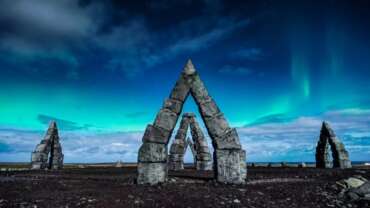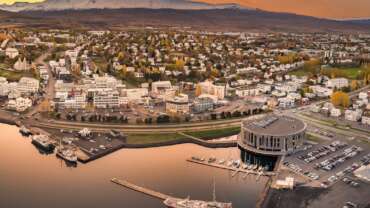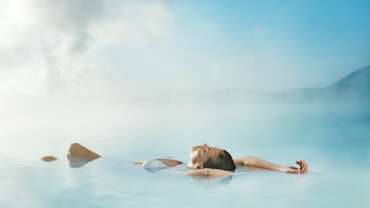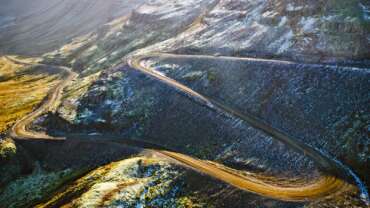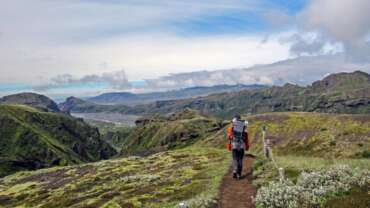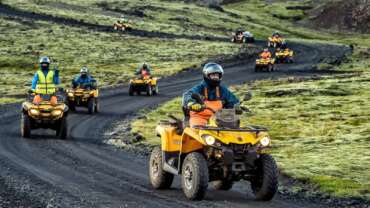Experiences in Iceland
A YEAR-ROUND DESTINATION
Every day, there is an adventure waiting to happen in iceland. With its abundance of mountains, volcanoes, glaciers, rivers, lakes, caves and otherwise rough terrain waiting to be tackled, iceland is truly an outdoor enthusiast’s paradise. But, it is also a warm and welcoming place for the rest of us.
FESTIVALS
All-year round, you will find creative festivals dedicated to music, film and fashion. During summer, town festivals attract large groups of people around the country, dominating the event calendar. With abundant daylight hours during summer, and the long after hours of winter, nothing beats a good festival in iceland.
HELICOPTER TOURS
Many of iceland’s most beautiful locations are in remote areas, where the rugged terrain can be difficult to traverse. Flying allows you to reach hard-to-access places with limited effort, and gives you an opportunity to experience nature from a new perspective.
And if you are in to skiing, there are pristine areas ripe for heli skiing in many areas. Take your skiing to new heights by reaching untouched slopes via helicopter. This unforgettable experience is an epic adventure, combining powder skiing with an exhilarating air journey and incredible views.
Iceland’s diverse landscape is at its most breathtaking when viewed from above, which makes aerial sightseeing tours by plane or helicopter an awe inspiring experiences. Many of Iceland’s most beautiful locations are in remote areas, where the rugged terrain can be difficult to traverse. Flying allows you to reach hard-to-access places with limited effort, and gives you an opportunity to experience nature from a new perspective.
Iceland’s diverse landscape is at its most breathtaking when viewed from above, which makes aerial sightseeing tours by plane or helicopter an awe inspiring experiences. Many of Iceland’s most beautiful locations are in remote areas, where the rugged terrain can be difficult to traverse. Flying allows you to reach hard-to-access places with limited effort, and gives you an opportunity to experience nature from a new perspective.
MANY OF ICELAND’S MOST BEAUTIFUL LOCATIONS ARE IN REMOTE AREAS, WHERE THE RUGGED TERRAIN CAN BE DIFFICULT TO TRAVERSE.
RUNNING
Beautiful scenery, great running paths and a climate that’s perfect for running with plenty of clean and fresh air! There is everything to like about running in iceland. In the capital region the best and most scenic running paths can be found by the coastline, just a few meters from the ocean and away from the streets. Wherever you are staying just step outside and you are minutes away from the most amazing running paths.
If you are located in the center of town you can run along the coast on the south of Reykjavík, around Elliðaárdalur in the east part, and then over to the north side of Reykjavík along the ocean—well over 20 kilometers—only crossing the road once!
One of the advantages of a small country is that there are few cars, so traffic-free runs are easy to find. Reykjavik also has the charm of being close to nature so you don’t have to drive for long to get to beautiful and challenging trails. Even in Reykjavik you only have to drive for 5 minutes to get on some great paths. On the edge of town is Heiðmörk, with tens of kilometers worth of woodland trails. These are best enjoyed in the summer as they can be a bit difficult in the winter.
Mt. Esja is the mountain watching over the city and it is a great place for a hike or a run with clearly marked paths – and during summer it can be as crowded as an average city street in Reykjavik. You will always find some runners there training for the popular trail races now being held in all parts of the country during summer time. Next door to Reykjavik are Mosfellsbær and Hafnarfjörður, with many easily accessible trails. Further away from Reykjavik there are many fantastic places to run. Reykjadalur in Hveragerði is a good choice for a challenging trail run. Akureyri in north Iceland has great running paths, and just outside of the town you will find fabulous trails in Kjarnaskógur and on Súlur mountain. Just ask the locals for directions, there are runners in every community.
Sometimes it feels like there is a little bit too much fresh air while running, especially in wintertime when the wind never seems to quiet down. Just remember to dress accordingly and keep in mind that there is often less shelter on the trails outside of the cities and towns. A unique experience in Iceland is to run in the midnight sun. You can easily go for an evening run or even in the middle of the night. It’s an experience you won’t forget.
VATNAJÖKULL NATIONAL PARK
The largest national park in Iceland
Vatnajökull national park, established in 2008, encompasses not only all of vatnajökull glacier but also extensive surrounding areas. These include the national parks previously existing at skaftafell in the southwest, and jökulsárgljúfur in the north, so that today’s park covers 13% of iceland and ranks among the largest national parks in europe.
Despite a large part of the national park being underneath the icecap of the glacier Vatnajökull, its landscape is diverse, predominantly due to the interplay of volcanic activity and glaciers. Few other places in the world exhibit the effects of such a wide range of natural phenomena as Vatnajökull, where the battle between ice and fire still rages, created by the combined forces of rivers, glacial ice, and volcanic and geothermal activity.
Nowhere in Iceland, with the exception of Mýrdalsjökull glacier, does more precipitation fall, or more water drain to the sea than on the south side of Vatnajökull. In fact, so much water is currently stored in Vatnajökull that the Icelandic river with the greatest flow, Ölfusá, would need over 200 years to carry this quantity of water to sea.
The south side of Vatnajökull is characterised by many high, majestic mountain ridges, with outlet glaciers descending between them onto the lowlands. The southernmost part of the glacier envelops the central volcano Öræfajökull and Iceland’s highest peak, Hvannadalshnúkur. Sheltered by the high ice, the vegetated oasis of Skaftafell overlooks the black sands deposited to its west by the river Skeiðará. These sands are mostly composed of ash which stems from the frequent eruptions at Grímsvötn and is brought to the coast by glacial floods.
The biggest glacial lagoon of its kind in Iceland is also located close by the Vatnajökull National Park. Easily accessible off Route 1, between Skaftafell and Höfn, the Jökulsárlón Glacial Lagoon formed as a result of a glacial retreat, when the Breiðamerkurjökull glacier began to recede away from the Atlantic, resulting in a picturesque lake where icebergs float.
VATNAJÖKULL NATIONAL PARK ENCOMPASSES NOT ONLY ALL OF VATNAJÖKULL GLACIER BUT ALSO EXTENSIVE SURROUNDING AREAS. THE PARK COVERS 13% OF ICELAND AND RANKS AS ON OF EUROPE’S LARGEST.
Located in the northern part of Vatnajökull National Park, Jökulsárgljúfur takes its name from a canyon formed by Iceland’s second longest river, Jökulsá á Fjöllum. Enormous catastrophic glacial bursts are believed to have carved out the deep ravines and rocky basins, the most famous of which is Ásbyrgi. Not far from Ásbyrgi is Dettifoss waterfall, the most powerful waterfall in Europe, with 500 cubic metres per second plummeting over the edge. A hiking trail goes along the canyon from Dettifoss to Ásbyrgi.
Hólmatungur is an expanse of rich vegetation in the Jökulsárgljúfur area and an area of sharp contrasts: crystal clear streams and bubbling brooks cross the land before emptying into the raging, chocolate-coloured torrent. A delicate balance of flora and fauna thrives under the protection of cliffs and scree slopes. The footpath between Hljóðaklettar and Hólmatungur, alongside Jökulsá á Fjöllum, is among the most beautiful in Iceland.
ÞINGVELLIR NATIONAL PARK
THE BIRTHPLACE OF A NATION
Besides being a location of historical significance, Þingvellir is also protected as a national park due to its unique geology and natural features. Almannagjá is a canyon formed between two tectonic plates, a visual representation of continental drift.
Situated on the northern shore of lake Þingvallavatn, Þingvellir is the national shrine of Iceland. It is, for one, a key location in Icelandic history as the oldest existing parliament in the world first assembled there in 930 AD. Þingvellir has for this reason been designated a UNESCO World Heritage Site.
SNÆFELLSJÖKULL NATIONAL PARK
The snæfellsjökull national park is the first national park that was established in iceland, the boundaries of which reach out into the sea.
Standing at the foot of a volcano and glacier, Snæfellsjökull National Park is the only park that reaches from the seashore to the mountaintops. Undisputedly the main attraction of the National Park is the Snæfellsjökull Glacier—the beautiful magnet of the western Peninsula. This active volcano, which stands 1,446 m high, provided the setting for Jules Vernes’ famous Journey to the Center of the Earth.
Snæfellsjökull glacier is said to be one of the seven great energy centres of the earth, and has been attributed various mysterious powers. The magnificent view from the top extends to Reykjanes Peninsula on the south side and the Westfjords on the north side, as well as over the mountains of Snæfellsnes to the east. Excursions onto the glacier are offered from the village Arnarstapi on the southern side. The park is perfect for exploring the adventurous world of the ocean, coastline and beach. Although the marine factor is the pride of the park, it is also a marvel for those interested in geology—and especially volcanology. Conditions for bird watching are good; birdlife is abundant both by the coast and in the lowlands.
ENJOY ICELANDIC FOOD
The most important ingredient in icelandic cuisine is location. Iceland is blessed with an abundance of fresh water, clean nature and fertile fishing grounds, while geothermal energy makes it possible to supply a year-round offering of fresh vegetables, grown locally in organic greenhouses.
In the past few years, Iceland has emerged as one of Europe’s most dynamic gastronomic destinations, full of exciting places to taste thrilling new recipes. Chefs create modern dishes with traditional ingredients, influenced by the philosophy of the New Nordic Cuisine, where freshness and local seasonal ingredients play a vital role.
A staple of Icelandic cuisine is fresh caught fish. Some of the richest fishing grounds in the North Atlantic can be found off the coast of Iceland, where cool and warm ocean currents meet to create the ideal conditions for fish stocks to thrive. For centuries, fishing has been an essential part of both Icelandic history and culture. It has been the lifeline of the nation, both as a vital part of the diet, and the primary export product. Rigorous standards are in place to maintain sustainable fisheries, and optimal treatment of the catch. Try one of the many Icelandic fishing restaurants, and you will understand why the locals will have you believe they invented the thing.
Icelandic lamb is also a popular ingredient. Sheep roam the open countryside all summer long, feeding on wild berries and moss. Come fall, they are rounded up on horseback, the way it has been done since the time of the earliest settlers. This free-range flavour comes through in succulent Icelandic lamb, praised by chefs all over the world.
Chefs throughout Iceland use vegetables and herbs locally grown in geothermally heated greenhouses around the country, making sure you enjoy the best quality produce available. Iceland’s dairy products are also becoming famous for their wholesome flavour, especially the yoghurt-like Skyr, now a big seller in Whole Foods stores in the US.
Fish and lamb are traditional, but most restaurants will also include beef, poultry, pork, game, seabirds, lobster, shrimp and scallop on their menus, as well as vegetarian dishes. You will also find many specialist restaurants, such as Indian, Pakistani, Korean, Chinese, Thai, Filipino, Japanese, Italian, French, Spanish, Danish, American and Mexican.
IN THE PAST FEW YEARS ICELAND HAS EMERGED AS ONE OF EUROPE’S MOST DYNAMIC GASTRONOMIC DESTINATIONS, FULL OF EXITING PLACES TO TASTE THRILLING NEW RECIPES.
Street eats are a must for visitors, especially Iceland’s favourite snack, the pylsa, or hot dog. Say, “eina med ollu”, when ordering and you’ll get a hot dog boldly topped with the works: crunchy fried onions, ketchup, sweet mustard, raw onions and curry remoulade sauce.
For the few daring souls, traditional Icelandic fare is of course widely available. In the era preceding modern day storage technology— i.e. the fridge—food was traditionally stored using more primitive methods. This traditional food consists of pickled, salted, cured, or smoked fish and meat of various kinds. In order to survive the long winter months, all parts of the animal were consumed. Don’t be surprised to find fermented shark, singed sheep heads or pickled ram’s testicles on the menu of speciality restaurants. Try them at your own risk.
ICE CLIMBING
When making a trip to iceland, it is hard not to pay special attention to the country’s namesake—namely, its 4,500 square miles of glacier.
CLIMBING GLACIERS
Ice climbing on the glaciers is practiced year-round and takes place mainly on the Sólheimajökull and Svínafellsjökull glaciers in the south of Iceland, to which day trips are offered from Reykjavík (and Skaftafell).
Hiking trips are also available onto the Snæfellsjökull glacier in the west and the Vatnajökull glacier in the east. Without exception, glacier walking or climbing should not be done without the accompaniment of a trained guide. Glacier walking tours can often be combined with other tours such as jeep safaris and boating on a glacier lagoon.
Ice climbing on glaciers is possible all year round but wintertime adds the unique opportunity of ice climbing waterfalls.
WITHOUT EXCEPTION, GLACIER WALKING OR CLIMBING SHOULD NOT BE DONE WITHOUT THE ACCOMPANIMENT OF A TRAINED GUIDE.
ICE CLIMBING TOUR OPERATORS IN ICELAND
These tours offer visitors an amazing first-hand experience of some of Iceland’s untamed nature, lead by trained professionals. The tours can be undertaken at various levels of experience and difficulty. Crampons and ice axes are generally provided, but it is recommended that you bring a waterproof jacket and trousers, a light sweater, quick dry trousers, a hat and gloves. In addition, hiking boots are often available for rent.



